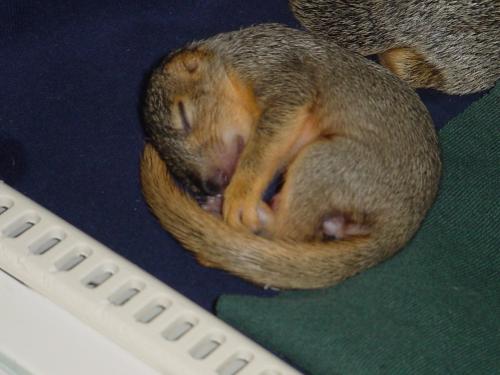 Blog written by: Kelsey Feighner
Blog written by: Kelsey Feighner
Bunnies, squirrel and raccoon kits, baby opossums…baby wildlife can be absolutely adorable. Even adults can be pretty cute sometimes, and people often seem to have at least one wild animal that they’d just love to keep as a pet.
So when you find yourself in the position of rescuing an orphaned bunny, squirrel, or other wild animal, it can be easy to decide to try keeping that baby and raising it yourself. Perhaps you wish to do so with the intention of releasing it when it’s older, or you think about how cool it would be to have the only pet squirrel in your neighborhood. There are just a few problems with this idea….
Babies take a LOT of work!
Squirrels and raccoon kits need to be fed every 4 hours throughout the day. Feeding takes a steady hand, lots of patience, and lots of practice – if the babies aspirate formula, they can get pneumonia and die. Bunnies are extremely hard to raise, even for experienced wildlife rehabbers. They are very easily stressed and can die quickly from it. They are also one of the most difficult mammals to hand feed and this should ONLY be attempted by someone who knows how to take care of bunnies. Baby opossums learn to eat on their own faster than other mammals, but before they’re big enough for that, they may need to be tube-fed rather than bottle-fed, a procedure that’s very easy to do incorrectly.
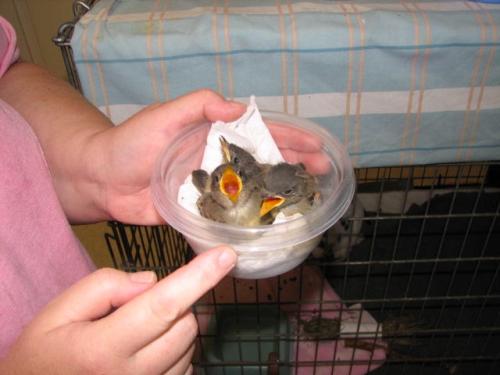 Birds can be even more difficult due to their fragility and high metabolism. Songbirds need to be fed every 20-40 minutes, all day long. Some birds, like doves, need to be fed into their crop. Raptor chicks present another difficulty – how many people are willing to cut mice up with scissors to hand feed a hawk chick? Raptors are also at risk for imprinting on humans. Imprinting means they fixate on humans as their parents, and decide that they must be human too – they don’t realize that they are a bird, and they will never be able to be released. Licensed rehabbers will often put raptor chicks with an adult of their own species, if possible, in order to help the chicks properly imprint on their own species.
Birds can be even more difficult due to their fragility and high metabolism. Songbirds need to be fed every 20-40 minutes, all day long. Some birds, like doves, need to be fed into their crop. Raptor chicks present another difficulty – how many people are willing to cut mice up with scissors to hand feed a hawk chick? Raptors are also at risk for imprinting on humans. Imprinting means they fixate on humans as their parents, and decide that they must be human too – they don’t realize that they are a bird, and they will never be able to be released. Licensed rehabbers will often put raptor chicks with an adult of their own species, if possible, in order to help the chicks properly imprint on their own species.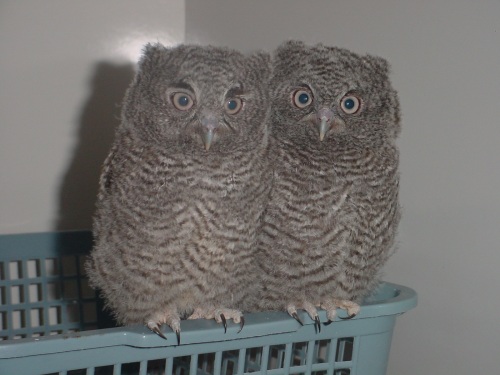
What do these things eat, anyway?
What kind of formula do you use for a squirrel kit? How about an opossum or a bunny? I’ll give you a hint – they don’t all get the same thing! Do you know what you’re supposed to feed a songbird nestling? It’s not earthworms, bread, or seed as you might be thinking…
Wild animals require very specialized diets in order to grow properly and reach their full, healthy adult size. It can be very, very easy to miss an important nutrient in an animal’s diet unless you know what you’re doing. Wildside has a good example to illustrate this problem:
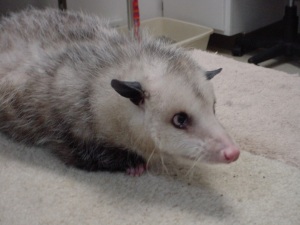 One of our education animals, an opossum named Pumpkin, was kept for as a young opossum by a person who wished to have her as a pet. Unfortunately, this person fed Pumpkin Sun Chips and hot dogs as a diet. While you might notice a couple other things wrong with the diet choices (hot dog aren’t a good thing to feed any animal, with the preservatives and salt), the biggest problem was this diet is that it had no calcium. Pumpkin is non-releasable because she came to us with Metabolic Bone Disease or MBD, from a lack of calcium. Her bones couldn’t grow correctly, and she still has slightly deformed feet and a bit of trouble walking because of the disease.
One of our education animals, an opossum named Pumpkin, was kept for as a young opossum by a person who wished to have her as a pet. Unfortunately, this person fed Pumpkin Sun Chips and hot dogs as a diet. While you might notice a couple other things wrong with the diet choices (hot dog aren’t a good thing to feed any animal, with the preservatives and salt), the biggest problem was this diet is that it had no calcium. Pumpkin is non-releasable because she came to us with Metabolic Bone Disease or MBD, from a lack of calcium. Her bones couldn’t grow correctly, and she still has slightly deformed feet and a bit of trouble walking because of the disease.
Licensed wildlife rehabbers have gone to special classes and continue their education and communicate with other rehabbers to make sure that they are always meeting the nutritional needs of every animal they receive. They are in the best position to make sure each animal, whether a baby or adult, is getting the correct diet and all of the necessary nutrients to be healthy.
It’s illegal!
Did you know that unless you’re a licensed wildlife rehabber, it’s illegal to be in possession of any Michigan wildlife taken from the wild? That includes any orphaned or injured wildlife that you might want to help. It’s also illegal for anyone who isn’t a licensed rehabber with the correct permits to be in possession of any bird of prey (adult or chick), their eggs, body parts, or feathers. Yup…it’s even illegal for you to keep a hawk feather you found on the ground! Before you get upset at “those silly laws”, keep in mind that these laws are in place to protect the animals from well-meaning people that might make the mistakes mentioned above. Wildlife DOES require specialized care, and it’s best to leave it to the experts.
If you’re not sure if you have any wildlife rescues anywhere near you, here’s a great list on the Michigan DNR’s website of all of the wildlife rehabbers in the state, as well as what animals they accept or specialize in – http://www.michigandnr.com/dlr/ If you have one near you that doesn’t take the animal you’ve found, try giving them a call anyway – most places will accept an animal to get it examined and stabilized before transferring it to another rehabber, or will be able to otherwise advise you. If you’re unsure on how to go about helping a possibly orphaned or injured animal, call a rehabber to receive further instructions and advice before moving further. You can also read our Animal Emergencies article – https://wildsidemi.wordpress.com/wild-animal-emergencies/
An Important Note: It is essential to get the animal to a rehabber as soon as you possibly can. Time is crucial to giving injured, ill, or orphaned animals the best chance we can. Waiting too long to get an animal to a rehabber for proper care can lead to dehydration, low body temperature and a longer period of time without food for orphaned babies This can hurt the animal’s chance of survival.
References:
http://www.michigan.gov/dnr/0,4570,7-153-31574_31580-230540–,00.html
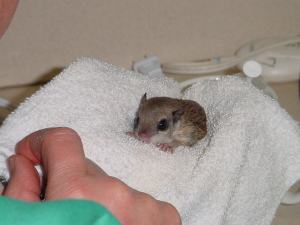
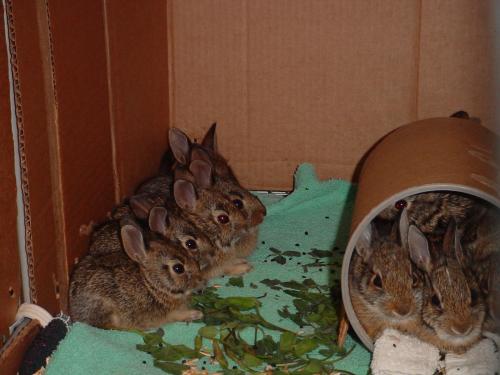
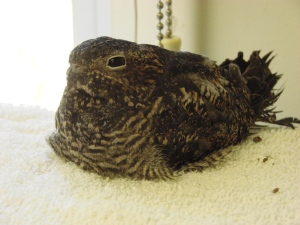
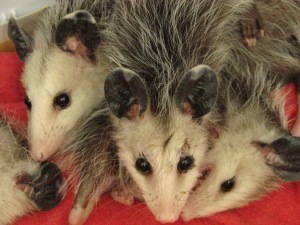

Leave a comment